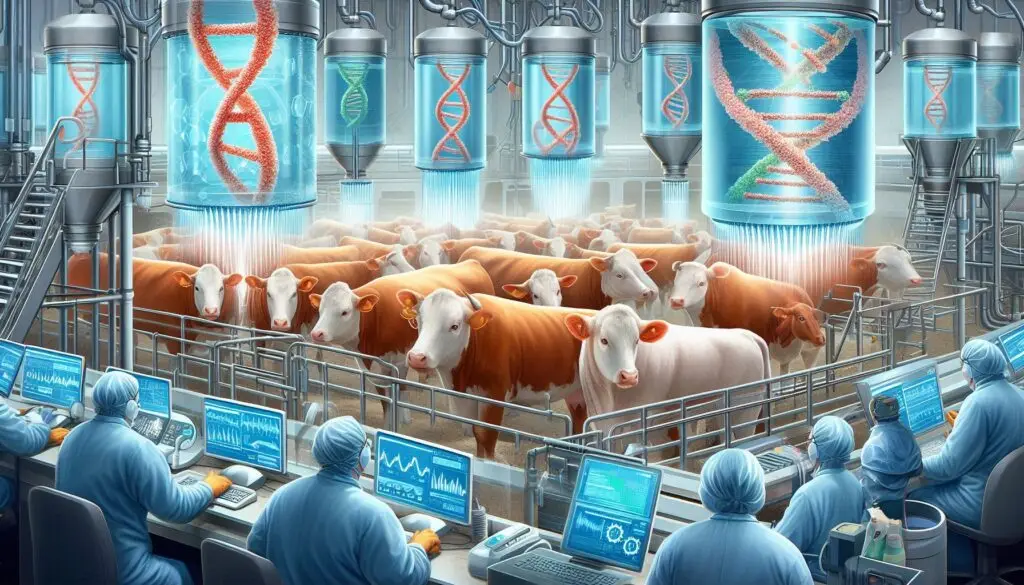Genetic Gains: Indirect Selection and Correlated Responses

Introduction
Genetic gains are crucial in breeding programs aimed at improving crop yields and livestock performance. Breeders employ various selection methods to achieve these gains. Among these methods, indirect selection stands out. This article explores the mechanisms behind indirect selection, its effectiveness, and the correlated responses it generates.
What is Indirect Selection?
Indirect selection involves choosing individuals based on traits that are not the primary target but are associated with it. For example, breeders might select for drought resistance instead of directly selecting for yield. This method relies on the genetic correlation between the selected trait and the target trait.
Why Use Indirect Selection?
- Efficiency: Indirect selection can be more efficient when the target trait is difficult to measure or has low heritability.
- Cost-Effectiveness: It often reduces costs associated with measuring the primary trait.
- Early Selection: Breeders can make selections at earlier growth stages, speeding up the breeding cycle.
Mechanisms of Indirect Selection
Genetic Correlation
Genetic correlation is the cornerstone of indirect selection. It measures how changes in one trait affect another. A strong positive correlation means that selecting for one trait will likely improve the other.
Heritability
Heritability indicates how much of the variation in a trait is due to genetic factors. Traits with high heritability are more reliable for indirect selection. For instance, if a trait has a heritability of 0.8, 80% of the variation is genetic.
Comparative Evaluation of Selection Methods
Direct vs. Indirect Selection
Direct selection focuses on the primary trait. In contrast, indirect selection targets secondary traits. Research shows that direct selection often yields higher genetic gains. However, indirect selection can be beneficial in specific contexts.
Expected Genetic Gains
Studies reveal that expected genetic gains from direct selection can be significantly higher than those from indirect selection. For example, in wheat breeding, direct selection for grain yield showed gains of up to 30%, while indirect selection based on plant height yielded only 10% gains.
Correlated Responses to Selection
Correlated responses occur when selection for one trait inadvertently affects another. This can be beneficial or detrimental. For instance, selecting for disease resistance might also improve yield, but it could negatively impact plant height.
Case Studies
Wheat Breeding
In wheat breeding, indirect selection for traits like chlorophyll content and tiller number has shown mixed results. While some studies indicate improvements in yield, others report negative impacts on grain quality.
Tree Species
In forestry, indirect selection for wood properties through growth traits has proven effective. Research on C. japonica demonstrated that selecting for growth characteristics led to significant improvements in wood quality.
Challenges of Indirect Selection
- Negative Correlations: Sometimes, the selected traits may have negative correlations with the target traits, leading to unintended consequences.
- Complexity of Traits: Traits often interact in complex ways, making it challenging to predict outcomes accurately.
- Loss of Genetic Variation: Over-reliance on indirect selection can lead to a loss of genetic diversity.
Best Practices for Breeders
- Understand Genetic Relationships: Breeders should thoroughly analyze the genetic correlations between traits.
- Monitor Correlated Responses: Regularly assess the impact of indirect selection on both selected and non-selected traits.
- Utilize Advanced Technologies: Employ genomic selection and molecular markers to enhance the precision of indirect selection.
Conclusion
Indirect selection is a powerful tool in breeding programs. While it may not always yield the highest genetic gains compared to direct selection, its efficiency and cost-effectiveness make it invaluable. Breeders must carefully consider the genetic relationships between traits to maximize benefits and minimize risks.
For more pearls of Vets Wisdom:
https://wiseias.com/partitioning-of-food-energy-within-animals/





Responses